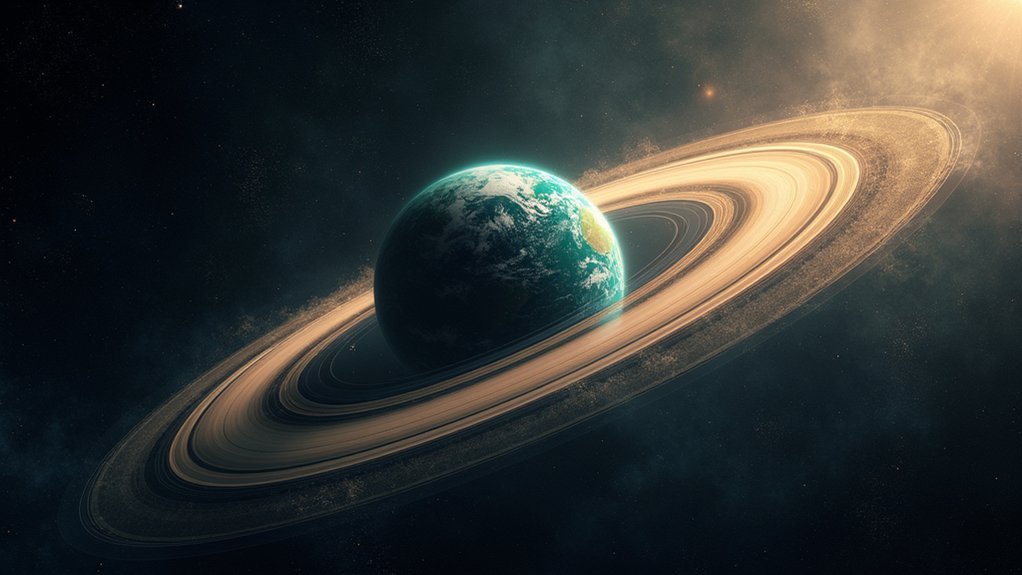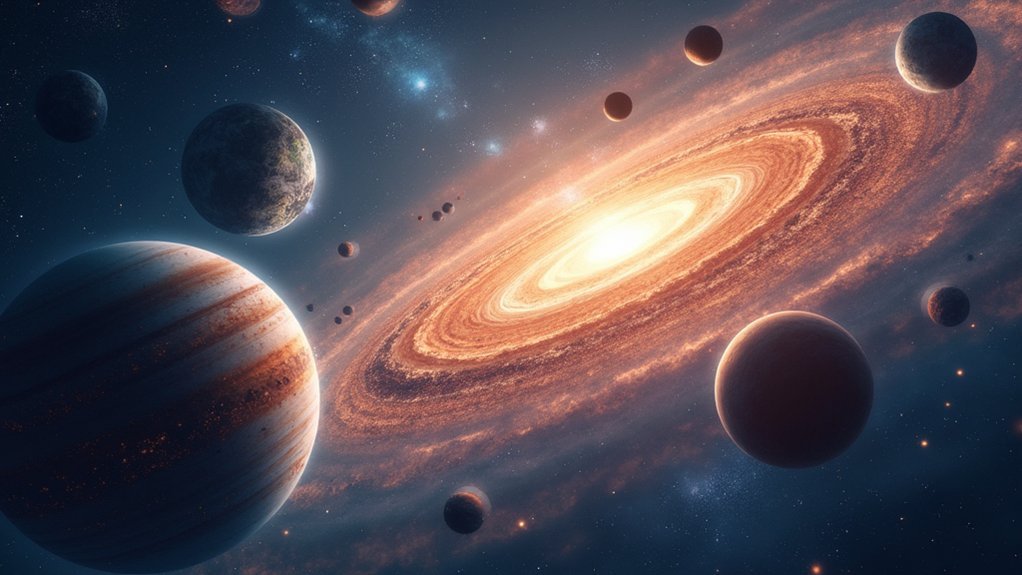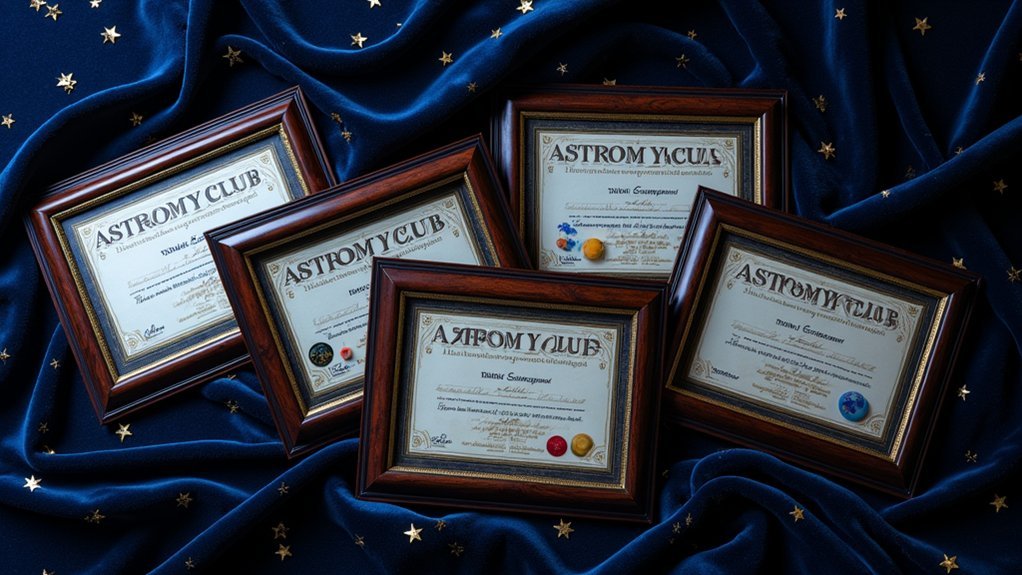Planets stay in orbit through three key mechanisms: the Sun’s powerful gravitational pull (28 times stronger than Earth’s) acts as an anchor, while each planet’s specific orbital velocity (Earth moves at 67,000 mph) provides the forward momentum to prevent falling inward. This creates a perfect balance where gravity pulls planets toward the Sun while their momentum pushes outward. This cosmic dance has maintained stable planetary paths for billions of years. The physics behind this balance reveals nature’s remarkable precision.
Gravity: The Sun’s Pull That Keeps Planets Close

While we marvel at the planets’ celestial dance, it’s the Sun’s immense gravitational power that orchestrates this cosmic ballet. The Sun’s gravitational pull is approximately 28 times stronger than Earth’s, creating enough force to keep planets from drifting into space.
You’re witnessing a perfect balance in our solar system: as planets move in their forward motion, the Sun’s gravity acts as a centripetal force, preventing them from flying away while also keeping them from crashing into the Sun. This delicate equilibrium results in stable orbits that have persisted for billions of years.
Even at great distance, the Sun’s influence remains powerful. Neptune, despite being billions of miles away, maintains its orbit due to this gravitational relationship—a demonstration of the remarkable physics governing our planetary neighborhood.
Velocity: Why Planets Don’t Fall Into the Sun
The Sun’s gravity alone could spell disaster for our solar system if left unchecked. What allows planets to stay in their orbits rather than plunging into our star? The answer lies in their velocity.
As you observe Earth’s orbit, you’ll notice it travels at approximately 67,000 miles per hour—fast enough to counteract the Sun’s gravity. This balance between forward velocity and gravitational pull creates the elliptical shape of planetary orbits.
When planets orbit around the Sun, they experience gravitational acceleration, causing them to speed up when closer to the Sun and slow down when farther away.
Each planet maintains its unique orbital velocity based on distance from the Sun. For example, Neptune moves at just 5 km/s, much slower than Earth, yet perfectly balanced for its position.
Balance of Forces: The Perfect Orbital Dance

Imagine a cosmic dance where gravity constantly pulls planets toward the Sun while their forward momentum perpetually carries them away. This delicate balance of forces creates the stable orbital path you observe in our solar system.
Gravity is a force that works as the Sun’s invisible tether. The Sun’s gravity provides just enough gravitational pull to prevent planets from drifting into space, while each planet’s forward motion keeps it from falling into the Sun. This perfect equilibrium explains why planets stay in their orbits for billions of years.
The conservation of angular momentum guarantees planets maintain their distance while traveling in elliptical orbits. Each planet’s unique orbital period—from Earth’s 365 days to Neptune’s 60,000—depends on this balance of forces, creating a cosmic choreography that’s both predictable and mathematically precise.
Frequently Asked Questions
How Do Planets Stay in Their Orbits?
You’re seeing planets stay in orbit because the Sun’s gravity pulls them inward while their forward motion pushes outward. This perfect balance creates stable elliptical paths they’ll follow indefinitely through space.
What Are the Facts About the Planets Orbit?
Planets orbit the Sun in elliptical paths at varying speeds. You’ll find Earth moves at 67,000 mph while Mercury completes an orbit in just 88 days. Their orbits remain stable through gravitational balance.
What Factors Keep the Planets in Orbit?
You’ll find that planets stay in orbit primarily due to the Sun’s gravity balanced with their forward momentum. This equilibrium creates a stable path, while conservation of angular momentum guarantees long-term orbital stability.
What Is Required for Planets to Stay in Orbit?
You need a balance between the Sun’s gravity pulling planets inward and their inertia moving them forward. This equilibrium keeps planets from crashing into the Sun or drifting away into space.
In Summary
You’ve now seen how the Sun’s gravity anchors planets while their velocity prevents a catastrophic fall inward. It’s the balance between these forces that creates the cosmic dance you observe. When you gaze at the night sky, you’re witnessing this perfect tension at work—planets neither flying away nor collapsing into the Sun, but instead perpetually orbiting in their celestial paths.





Leave a Reply